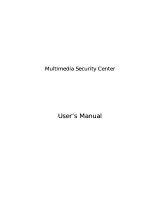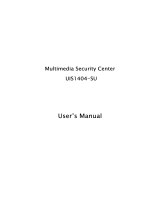3.4.2 Setting Up the XRouter Pro Through a Web Browser
Now that you have completed the configuration of TCP/IP addresses of
the client and managing computers, you may begin configuring the
XRouter Pro’s Internet settings. This can be done through a standard Web
browser (such as Netscape Navigator, Netscape Communicator, or
Microsoft Internet Explorer).
IMPORTANT: Before you begin, you must find out if your ISP provides one
of following IP addressing types:
Dynamic with PPPoE: If your service is dynamic addressing with PPPoE sup-
port, you do not need to follow the instructions below. However,you will need to
proceed to the PPPoE Settings section in the Advanced Configuration section of
this manual.
Dynamic: If the service is dynamic, you do not need to follow the instructions
below because the XRouter Pro automatically configures the TCP/IP information
provided by your ISP (you should already have Internet access.) Now you are
done installing the XRouter Pro and can begin accessing the Internet from any of
the client computers.
NOTE: The ISPs require the use of a MAC address (hardware address of a
network device) for service connection. Then you will need to contact to the
service provider and inform them the Public MAC address of your XRouter
Pro. It can be found on the OnePage Setup of the XRouter Pro. To access
the XRouter Pro’s OnePage Setup screen, follow the instructions below.
Static with PPPoE: If the ISP has provided a static IP address or if you would like
to make further changes to the advanced features, you will need to enter the Web-
based configuration described below to configure the static IP address provided by
your ISP. You will also need to use the PPPoE Settings section in the Advanced
Configuration section of this manual.
Static: If your ISP has provided a Static IP address or if you would like to make
further changes to the advanced features, you will need to enter the web-based
configuration described below to configure the static IP address provided by your
ISP.
Enter the Web-based configuration
1. Launch the Web browser.
NOTE: Netscape Communicator 4.0, Internet Explorer 4.0 or above is neces-
sary for configuring the XRouter Pro.)
13
Chapter 3 - EASY INSTALLATION


























